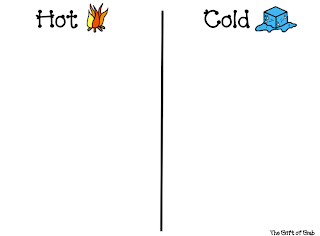Planning, data, and organization are things every
SLP can love and battle with all at once. We LOVE to have a functional system, but
often struggle with how time consuming and effortful they can become. Today I
thought I would share with you my planning binder and data collection system.
For starters, I keep all of my student data in binders grouped by grade level.
Each binder has a tab for the student’s name, an attendance log, a copy of
their IEP goals,, data sheets (link below), and a folder pocket to store
student materials/work. I keep all of my data on address labels so that I can
quickly store the data after each session and also avoid having a million
papers in front of me during therapy.
Now, for the planning. This is something I really struggled
with my first year, got better at my second year, and now am actually enjoying
this year. Here’s the cover of my planning binder:
Pretty simple. Just a little scrapbook paper and my
schedule. When you open the
binder, you’ll see the lesson/activity pages. They look like this:
The format includes time, name, current goals for the
quarter, and a place for me to write my plans/activities. Like this:
This format gives me a quick way to reference current student objectives and also space for quick notes over what I’d like to cover during the session. I always keep the copy of the previous week’s plan in back to reference and a blank week of plans behind the current week. That way if I think of something that I want to cover the following week/session, I have a way to note and remember it.After my planning pages, I keep the following:
A folder pocket of blank labels
A folder pocket of
pre-made labels made for articulation students and preschool language group. You can find the link to these at the
bottom.
Upcoming plans for language group and grading/accuracy
charts.
As far as data collection and data sheets go, I keep my data
on address labels (the size that fits 30 labels per page). This allows me enough space to make a quick note of
our activity and to keep tallies/pluses/dashes for accuracy. My data sheets look like this:
I have templates for students that have one goal, two goals,
and three goals, and the address labels will fit in each. I like this format
because I am able to get a quick check over what has been targeted more
frequently/recently and I can then balance out my therapy activities
appropriately. I also have an anecdotal
data log that I can use when I feel I might need more space to jot notes.
The downside to this format is that it can use a bit more
paper and the address labels are not always cost effective (I have my school secretary
purchase them for a discounted price through an office supplier and use part of
my school budget). However, I will say that this structure has worked extremely
well for me in allowing me to be organized, efficient, and without shuffling
many papers during a session.
I’ve included blank documents for you try and use. I hope
you find them helpful!








































